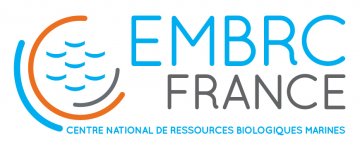Diversity and Functioning of Harbor Communities - Influence on Non-Indigenous Species in a Climate Change Driven Context" in the conference room of the Station Biologique de Roscoff
PhD defense
Robin Gauff
Dominique DAVOULT
The
Examining board is composed by:
•Prof. Anna Occhipinti-Ambrogi, Professor, University of Pavia, Department
of Earth and Environmental Sciences (Referee)
•Prof. Fanny Noisette, Professor, University du Quebec à Rimousky,
Institut des sciences de la mer de Rimouski (Referee)
•Prof. Gérald Culioli, Professor, Avignon Université - Institut
Méditerranéen de Biodiversité et d’Écologie Marine et Continentale (UMR
7263) (Examinator)
•Prof. Eric Thiébaut, Professor, Sorbonne Université, Adaptation et
Diversité en Milieu Marin (UMR 7144) (Examinator)
•Dr. Thierry Comtet, Researcher, Centre National de Recherche
Scientifique, Adaptation et Diversité en Milieu Marin (UMR 7144),
(Examinator)
•Dr. Christophe Lejeusne, Associate professor, Aix-Marseille Université -
Institut Méditerranéen de Biodiversité et d’Écologie Marine et
Continentale (Examinator)
•Prof. Dominique Davoult, Professor, Adaptation et Diversité en Milieu
Marin (UMR 7144), Sorbonne Université (Examinator)
Abstract:
Marine infrastructures offer new substrates, colonized by a
variety of organisms (biofouling), but are different from natural habitats
since environmental filters and ecological processes differ, biotic
composition differs from natural habitats, and they are characterized by a
high diversity and abundance of non-indigenous species (NIS).
Artificialization in marinas modifies hydrodynamism, affecting the water
column characteristics like temperature and favoring the concentration of
anthropic disturbances like pollutants. Environmental gradients may be
present, with higher levels of disturbance in the innermost parts of
marinas, acting as selective filters for organisms. The present work aimed
to understand the diversity and functioning of sessile communities in
marinas by studying how disturbance gradients shape community structure
and function between the entrances of marinas and their more disturbed
inner parts. A particular focus laid on NIS, which are common in marinas
and constitute an important societal challenge. An experimental approach
(reciprocal transplant) in six marinas from two regions (Mediterranean,
Atlantic), revealed that differences in community structure are caused by
local pollution levels, associated to local adaptation at small spatial
scale (<100m). However, other processes might affect these dynamics like
biotic interactions (predation) and pulse disturbances (heat waves). In
the context of climate change, we also tested how projected seawater
warming (+3°C) may impact marina communities and might favor NIS. These
results might help understanding how disturbances in marine urban
ecosystems drive biodiversity and especially the prevalence of NIS.







